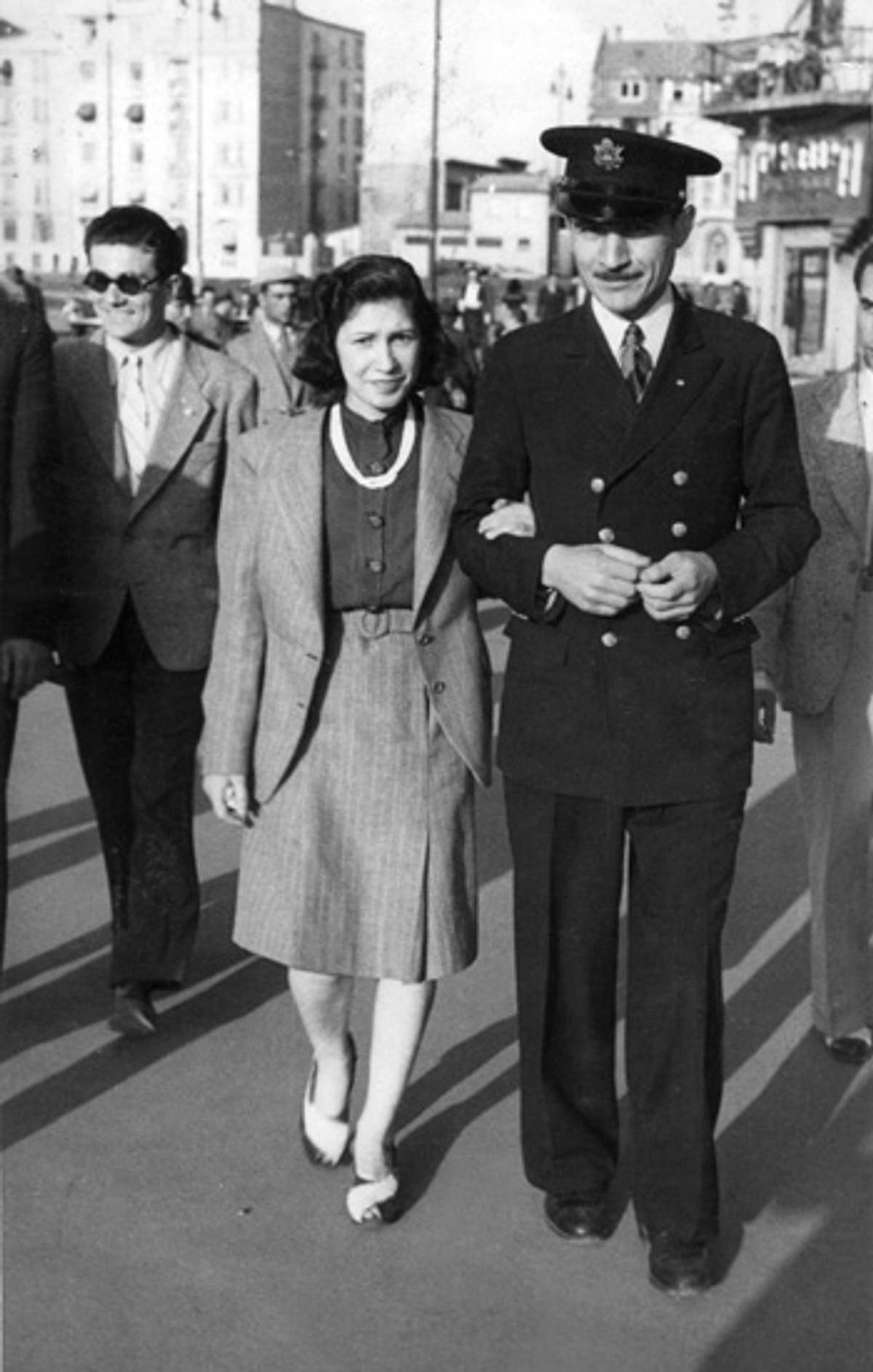Turkish Memories, Jewish Food
The new culinary memoir The Ottoman Turk and the Jewish Girl preserves an immigrant family’s history—and its treasured Passover recipes




For years, whenever I wanted old Sephardic recipes for Passover and other holidays, I would visit Ida Dana. I first met her at a cooking series featuring Sephardic cooks held at Magen David Synagogue in Rockville, Md. These events, like quilting bees, were a way for women to connect with each other, as they prepared food for bar mitzvahs, weddings, and other life cycle events. Dana, a native of Istanbul, was the lead Turkish cook at these gatherings, her quick fingers deftly molding burekitas or Passover bumuelos.
Dana’s niece, Beyhan Cagri Trock, is an architect by profession—but she remembers her aunt’s (and her mother’s) cooking. After her mother died, and Dana started showing signs of dementia, Trock realized that much of the food and culture she grew up enjoying—as well as her family’s own history—was in danger of being lost.
“I didn’t want to twiddle my thumbs,” Trock, 57, told me recently in my kitchen. “I thought that my sons don’t know anything about my history.”
To keep the history, and the recipes, alive, Trock has just published a culinary memoir called The Ottoman Turk and the Pretty Jewish Girl. It is simultaneously a love story about a Muslim Turkish man and the Sephardic Jewish girl with whom he fell in love—Trock’s parents—and a collection of 101 Turkish and Sephardic recipes.
It is no coincidence that the book is coming out just in time for Passover: This is the holiday where American Jews seem to connect with their roots the most. For Trock, Passover was the time where she felt that she really belonged to her Ladino Sephardic Jewish culture, cradled in the bosom of her mother and aunts, who did all the cooking for the family Seder.
“Turkish and Jewish Turkish food is pretty much the same—except at Passover,” she told me. “That is when the old recipes really come out.” For Passover, she said, Turkish Jews made wonderful vegetable and egg casseroles, meat and vegetable patties, and even matzoh-layered meat and vegetable pies.
As second- and third-generation immigrants get further from their roots, many of these traditions are being lost. “There are less and less people who do the Sephardic Seder,” said Trock, including her own family. “We used to do it in Ladino and Hebrew, now we do it in English. And my husband is Ashkenazi, so his customs are totally different.” Keeping her family’s recipes alive is vital to the survival of Turkish and Sephardic culture—and Trock’s own family history.

Her father, Zeki Cagri, was 35 when he met her mother, Beti Revah, who was 17, in Istanbul. Already in an arranged marriage to his new stepsister, with whom he had two sons, Cagri met Revah by chance in her father’s laundry shop. The two fell madly in love and ran off to Ankara, where he worked at the American Embassy as a chauffeur. Although they did not marry, they raised a new family with four children, Trock being the youngest. When Cagri retired, the embassy offered him either a pension or a green card. He opted for the green card and relocated the family to Washington, D.C. There, Cagri worked as the chauffeur for the Turkish Embassy and Revah became a secretary to the ambassador. (She went on to work as a secretary at the Iranian Embassy—where nobody knew she was Jewish; she was the only staffer remaining in the embassy when the Shah fell in 1979.)
Growing up in Maryland, young Beyhan became an Americanized teenager. Alarmed, her father took her back to Turkey for a summer—which is when she learned a trove of Turkish recipes and an appreciation of her background. As the Turkish and Sephardic community around Washington swelled in the 1960s, many immigrants, including her aunts, brought more recipes. “I grew up with this stuff,” said Trock, “stirring, serving, watching.”
Trock includes many of these recipes in her book, illustrating every movement of the hand for every step of the food preparation, and explaining Sephardic culinary culture along the way. Take a recipe, for example, like zucchini and cheese pie for Passover. It is a typical Sephardic dish of the cuajado variety. “Cuajado translates as either ‘coagulated’ or ‘having curds’ and describes any number of savory baked dishes made from a combination of mild, fresh curd cheese such as cottage or farmer, plus additional cheeses with varying degrees of saltiness, lots of eggs, a little matzo meal for binding and copious amounts of one fresh, watery vegetable or another–spinach, zucchini, eggplant, leek or tomato,” writes Janet Amateau, at SephardicFood.com. “The texture is soft but not mushy, something like a savory bread pudding with the emphasis not on bread but on grated, shredded or mashed vegetables. The cheese is used in a way that imparts flavor without dominating the texture.” Trock peels the zucchini and uses the skin in kaskarikas, another dish where they are sautéed in a little olive oil and tomato, so that every part of the vegetable is used.
Or take this recipe: “My favorite dish is Albondigas de Pırasa (Spanish for ‘balls of’ and Turkish for ‘leeks’),” Trock writes. “They’re made with a seasoned ground beef and leek mixture or spinach, mashed potatoes or eggplant, formed into patties and fried. My aunts shape the potato patties round instead of oval so you can tell them apart from the leek ones.”
Words like this are priceless for those of us who want to record our oral history and culinary traditions. Turkish Sephardic food will survive—even beyond Istanbul, one of the few communities where Ladino is still spoken—thanks to Beyhan Cagri Trock.
Joan Nathan is Tablet Magazine’s food columnist and the author of 10 cookbooks including King Solomon’s Table: a Culinary Exploration of Jewish Cooking from Around the World.